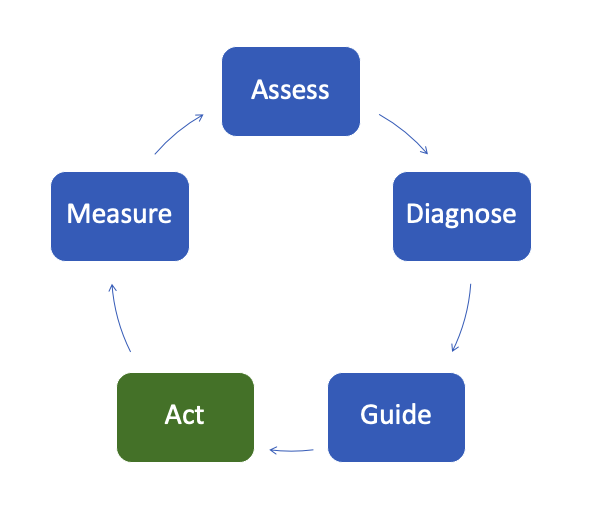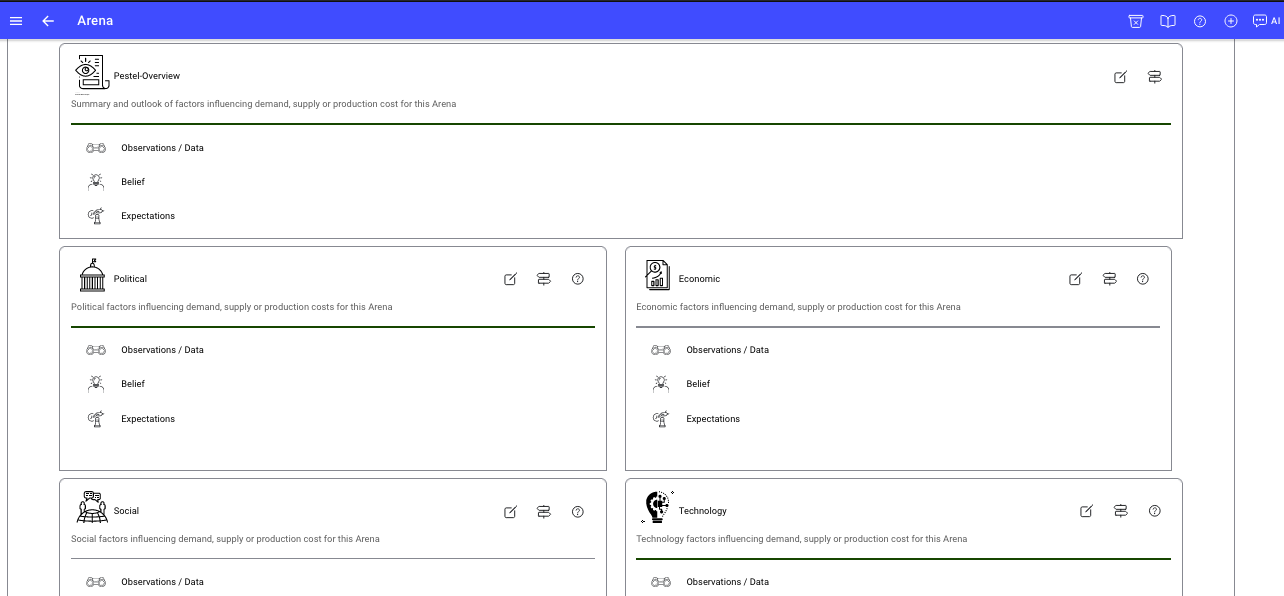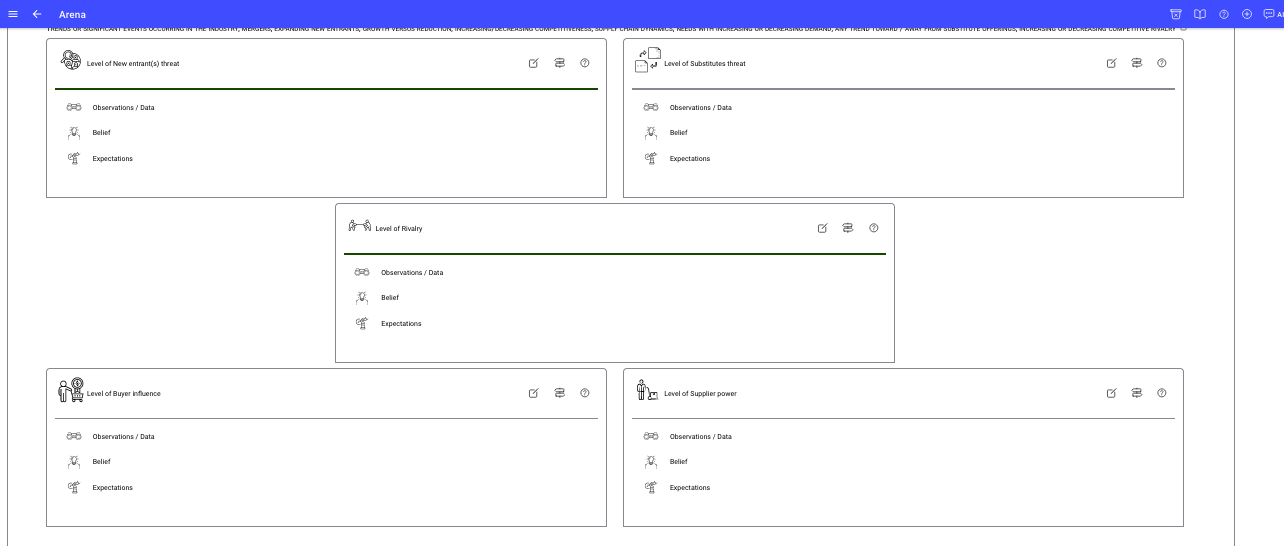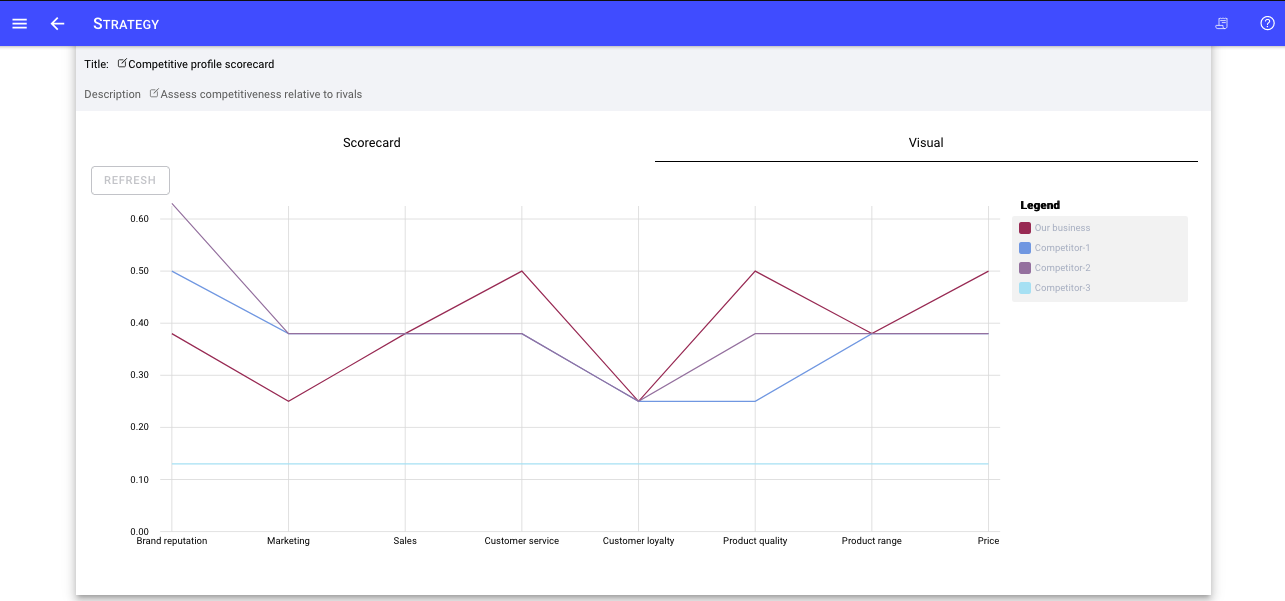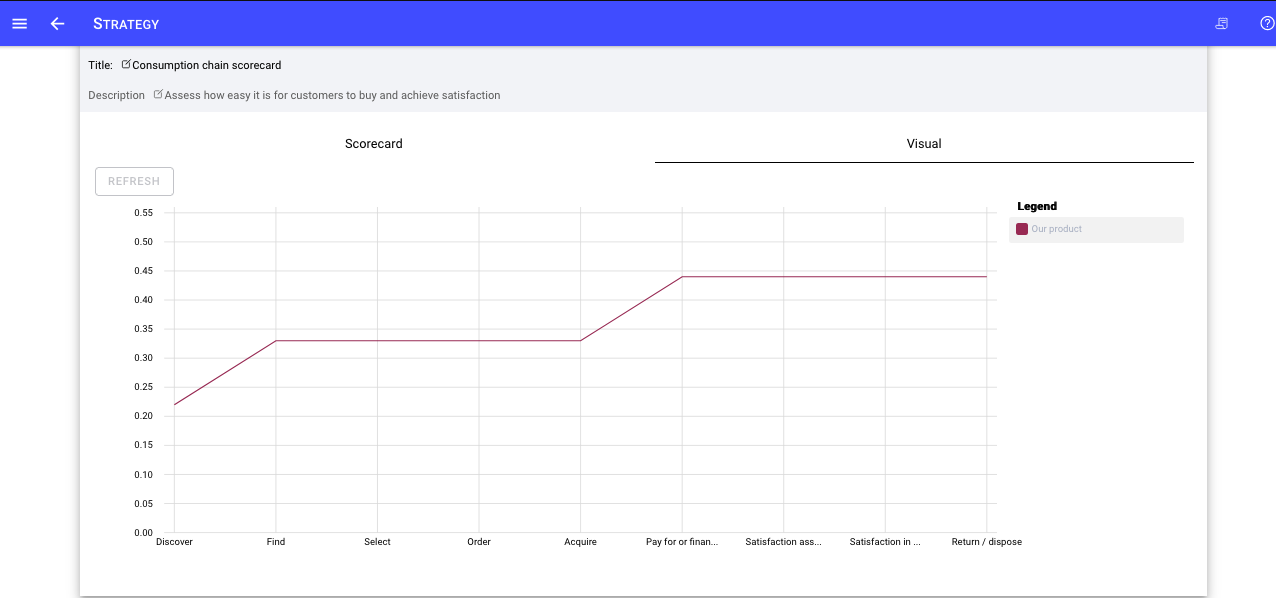In this section
-
Provide an introduction and overview of the Balanced scorecard
-
Briefly explain each of the four perspectives of the balanced scorecard.
-
Demonstrate how to build your action scorecard
-
Describe how you can add measures to your scorecard
Why a Balanced scorecard approach to action?
The action plan section of the StrategyCAD implmentation canvas enables you use and structure your action plan according to Kaplan and Norton’s Balanced scorecard. The Balanced Scorecard is a strategic management tool that allows leaders translate strategy into actionable objectives, metrics and monitor progress towards achieving them. It provides a framework for aligning all aspects of an organization, including financial, customer, internal process, and organizational enablement, towards the same strategic goals. By using the Balanced Scorecard, strategic leaders can ensure that their strategy implementation is communicated throughout the organization, that resources are allocated effectively, and that progress towards achieving strategic objectives is tracked and adjusted as needed.
In summary, the Balanced Scorecard plays a critical role in strategy execution by helping strategic leaders sustain focus on their strategic objectives and ensure that their efforts are aligned towards achieving them.
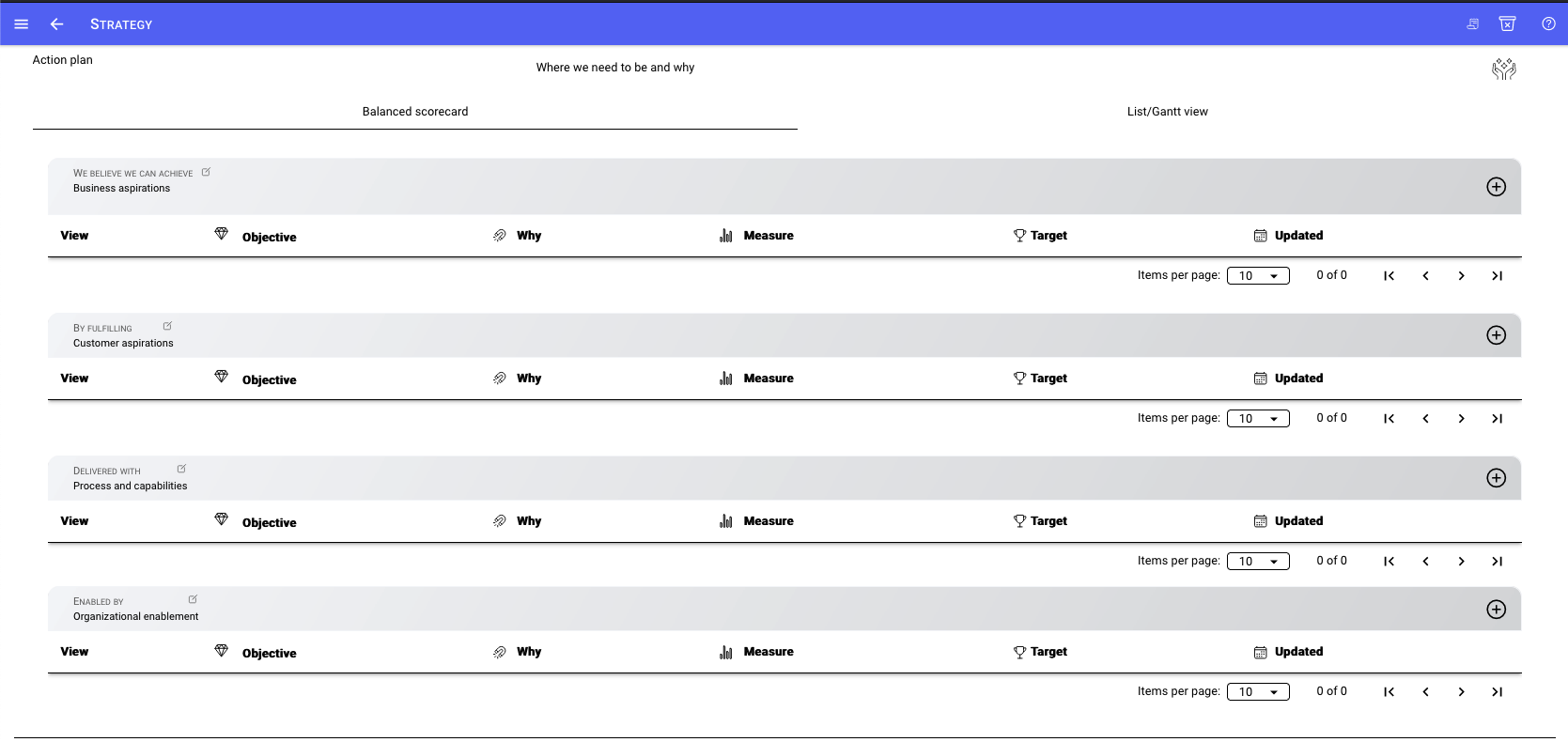
This perspective focuses on the stakeholder / financial outcomes of your strategy. It includes financial objectives with metrics related as revenue growth, profitability, return on investment (ROI), and cash flow. The financial perspective is important because it helps to ensure your business is creating value for stakeholders and driving or sustaining financial success.
Stakeholder value is derived from providing customer value or winning with your target customers in your where to play choice.
Starting with your customer objectives can be an ideal place to start.
This perspective focuses on the needs and expectations of your customers. It includes objectives and related metrics related customer satisfaction, customer retention, and market share. The customer perspective is important because it helps strategic leaders understand how well they are meeting the needs of their customers and how they can improve the unique value blend of their products and services to better serve them.
This perspective focuses on the internal processes or systems and capabilities that are necessary to deliver value to customers and achieve financial success. It includes metrics (Value delivery chain) such as process efficiency, quality, and innovation. The internal processes perspective is important because it helps strategic leaders identify areas where they can improve their operations and create more value for customers while minimizing waste and inefficiencies.
This perspective focuses on the people and systems needed to support an organization's strategy. It includes metrics such as employee skills training and development, information technology infrastructure, and organizational culture. The organizational enablement perspective is important because it ensures the organization has the necessary resources to execute its strategy effectively and adapt to changing circumstances.
Adding objectives to each perspective
Click the Add + icon on any perspective to add a measurable objective e.g. Increase customer retention with a metric such by 10% with a target date to achieve the metric.
This will open the Objective editor. You can record your objective, its rationale and commencement and end date
If you would like to have all the same members of your strategy team as members of the Objective leave the checkbox include members from parent objective checked.
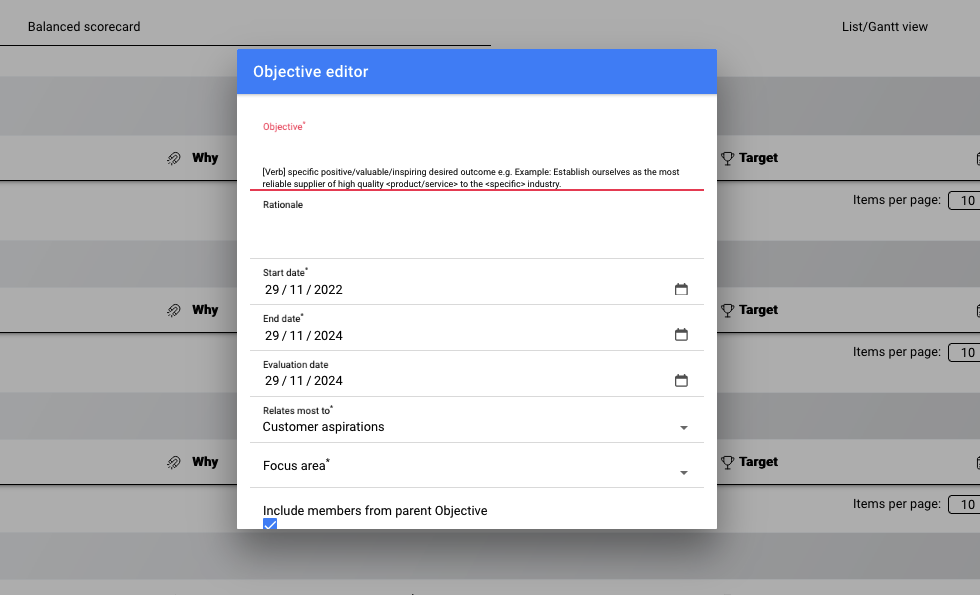
Viewing the Objective
Click on the view icon linked to the Objective in your scorecard
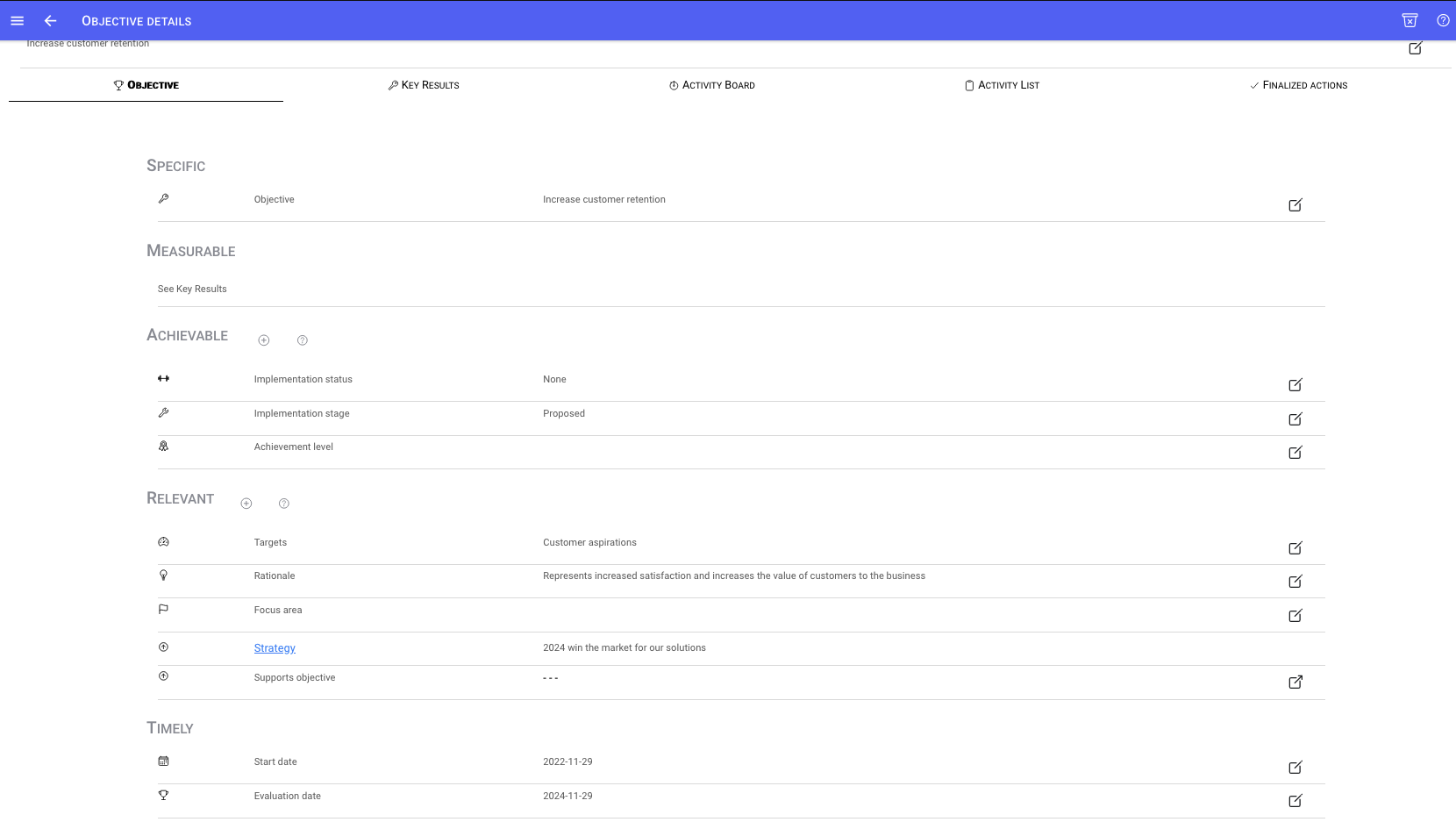
Adding measures
Select the Key Results tab and click/tap the Add tab.
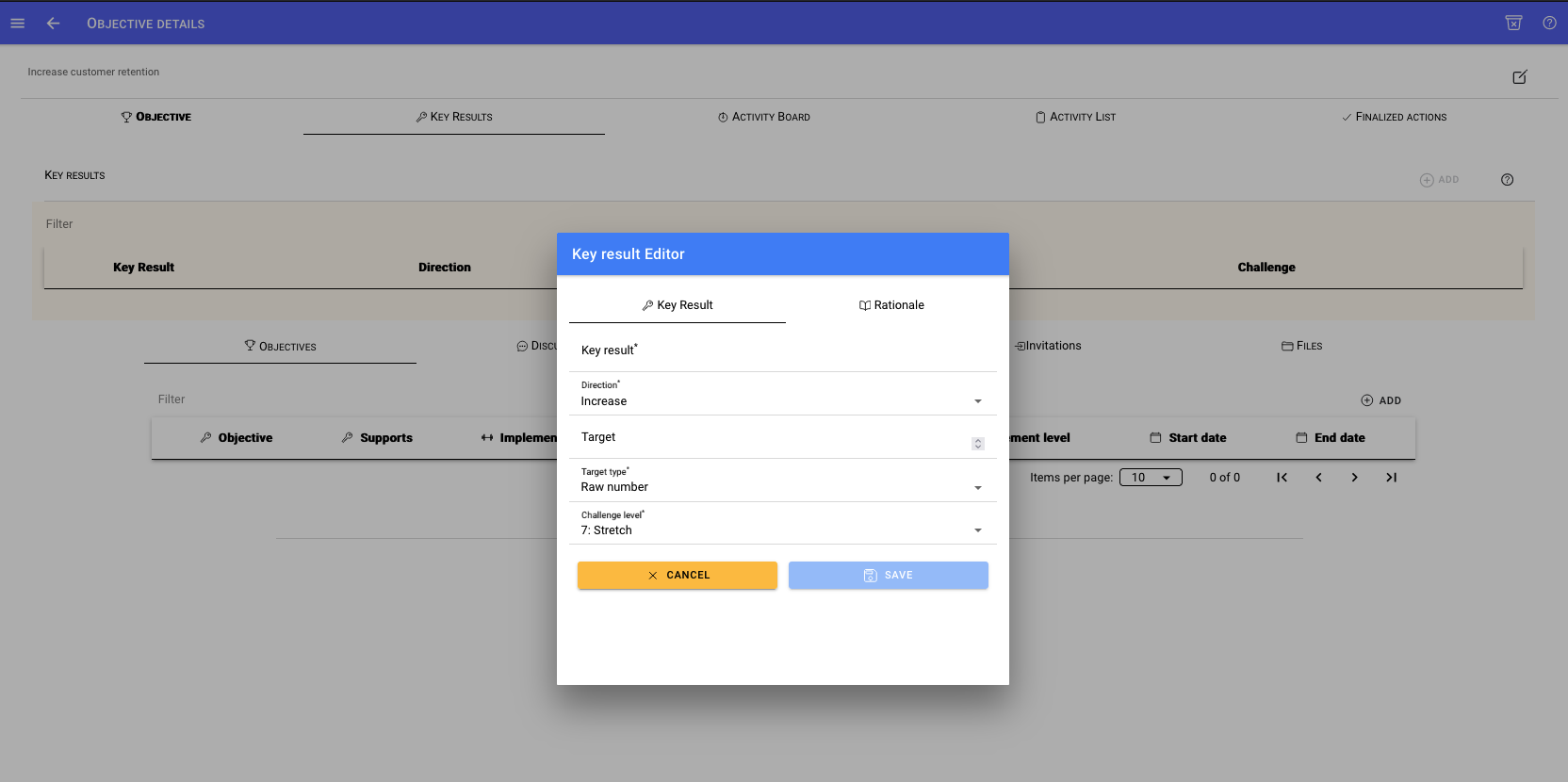
Define your key result (measure)
Each Key Result linked to objectives in your action scorecard will be automatically added to your metrics dashboard on your Strategy implementation canvas.
You can then add results, view the trend for your scorecard objectives and measures from the measures section of your strategy implementation canvas.
